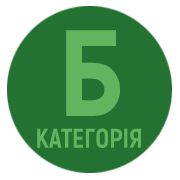BIOINDICATION RESEARCHES AT EPIPHYTIC LICHENOFLORA OF SUMY CITY AND ITS SURROUNDINGS
DOI:
https://doi.org/10.32782/naturalspu/2023.2.4Keywords:
lichens, indicator species, lichen indication, index of air purity, air pollution, Sumy region.Abstract
As a result of the conducted survey, 26 species of epiphytic lichens were identified in Sumy city including 11 indicator species: Evernia prunastri (L.) Ach., Cladonia fimbriata (L.) Fr., Hypogymnia physodes (L.) Nyl., H. tubulosa (Schaer.) Hav., Lecanora chloropolia (Erichsen) Almb., Parmelia sulcata Taylor, Phaeophyscia orbicularis (Neck.) Moberg, Physcia tenella (Scop.) DC., Scoliciosporum chlorococcum (Graewe ex Stenh.) Vězda, Straminella varia (Hoffm.) S.Y. Kondr., Lőkös & Farkas (syn. Lecanora varia (Hoffm.) Ach.) та Xanthoria parietina (L.) Th. Fr. Two of these lichen species is indicator of acid pollution, two species have high sensitivity, three species – medium sensitivity to air pollution; four species are resistant to pollution. Indicators of acid pollution were found throughout the city on trees, in parks and squares along highways and near industrial enterprises of the city. Distribution of indicators with high sensitivity is confined to the natural forest communities in the north-eastern part of the city. Medium-sensitive species were also found in natural forests, parks and street plantings in the city center, northern and central parts of the city. Species resistant to air pollution are distributed quite evenly throughout the city, including on the bark of trees in street plantings. On the basis of calculation of the index of air purity of Le Blanc and De Sloover, the city area has been subdivided into four isotoxic lichen zones corresponding to different levels of pollution. The most polluted areas (lichen deserts, as well as heavily and moderately polluted isotoxic lichen zones) are limited to the north-western and eastern parts of the city, which coincides with the territories of the largest stationary industrial enterprises of the Sumy city.
References
Біоіндикація та біотестування – методи пізнання екологічного стану навколишнього середовища / Ашихміна Т. Я. та ін. К: Знання, 2005. 450 с.
Кондратюк С. Я., Мартиненко В. Г. Ліхеноіндикація (Посібник). Київ-Кіровоград : ТОВ «КОД», 2006. 260 с.
Трасс Х. Х. Биоиндикация состояния атмосферной среды городов. Экологические аспекты городских систем / Отв. ред. Л. М. Сущеня. Минск: Навука і техніка, 1984. С. 96–109.
. Пірогов С. В., Волгін С. О. Біоіндикаційні дослідження за епіфітною ліхенофлорою шпилькових і листяних дерев на Західній Україні. Біологічні студії. 2008. Т. 2, №1. С. 86–91.
Зеленко С. Д. Ліхеноіндикаційна оцінка забрудненості повітря м. Чернігова. Український ботанічний журнал. 1999. Т. 56, № 1. С. 64–67.
Ричак Н. Л., Свистунова А. М. Оцінка якості атмосферного повітря урбосистеми методом ліхеноіндикації (на прикладі Дзержинського району міста Харкова). Вісник Харківського національного університету імені В. Н. Каразіна. 2013. № 1070. Серія «Екологія». Випуск 9. С. 74–83.
Димитрова Л. В. Ліхеноіндикація забруднення атмосферного повітря м. Києва. Український ботанічний журнал. 2008. Т. 65, № 4. С. 572-585.
Шершова Н. В. Ліхеноіндикація стану атмосферного повітря в місті Васильків Київської області. Український ботанічний журнал. 2018. Т. 75, №2. С. 143–148.
Литвиненко Ю. І., Маслов Д. В. Ліхеноіндикаційна оцінка якості атмосферного повітря м. Путивль. Слобожанський науковий вісник. Серія природнича. 2022. Т. 1, вип. 1.
Трасс Х. Х. Классы полеотолерантности лишайников и экологический мониторинг. Проблемы экологического мониторинга и моделирования экосистем. Т. 7. Л.: Гидрометеоиздат, 1985. С.122–137.
Окснер А. М. Флора лишайників України. К. : Вид-во АН УРСР, 1956. Т. 1. 495 с.
Окснер А. М. Флора лишайників України. К. : Наукова думка, 1968. Т. 2. Ч. 1. 500 с.
Окснер А. М. Флора лишайників України. К. : Наукова думка, 1993. Т. 2. Ч. 2. 542 с.
Окснер А. М. Флора лишайників України. В 2-х т. Т.2., вип. 3. К. : Наукова думка, 2010. 663 с.
Wetmore C. Key to the lichens of Minnesota. St. Paul, Minnesota: University of Minnesota, 2005. 92 pp.
Index Fungorum. CABI Bioscience databases [online]. URL: www.indexfungorum.org [дата звернення 30.06.2022]
Kondratyuk S. Ya., Khodosovlsev O. Ye., Zelenko S. D. The second checklist of lichen forming, lichenicolous and allied fungi of Ukraine. Kyiv : Phytosociocentre, 1998. 180 p.







